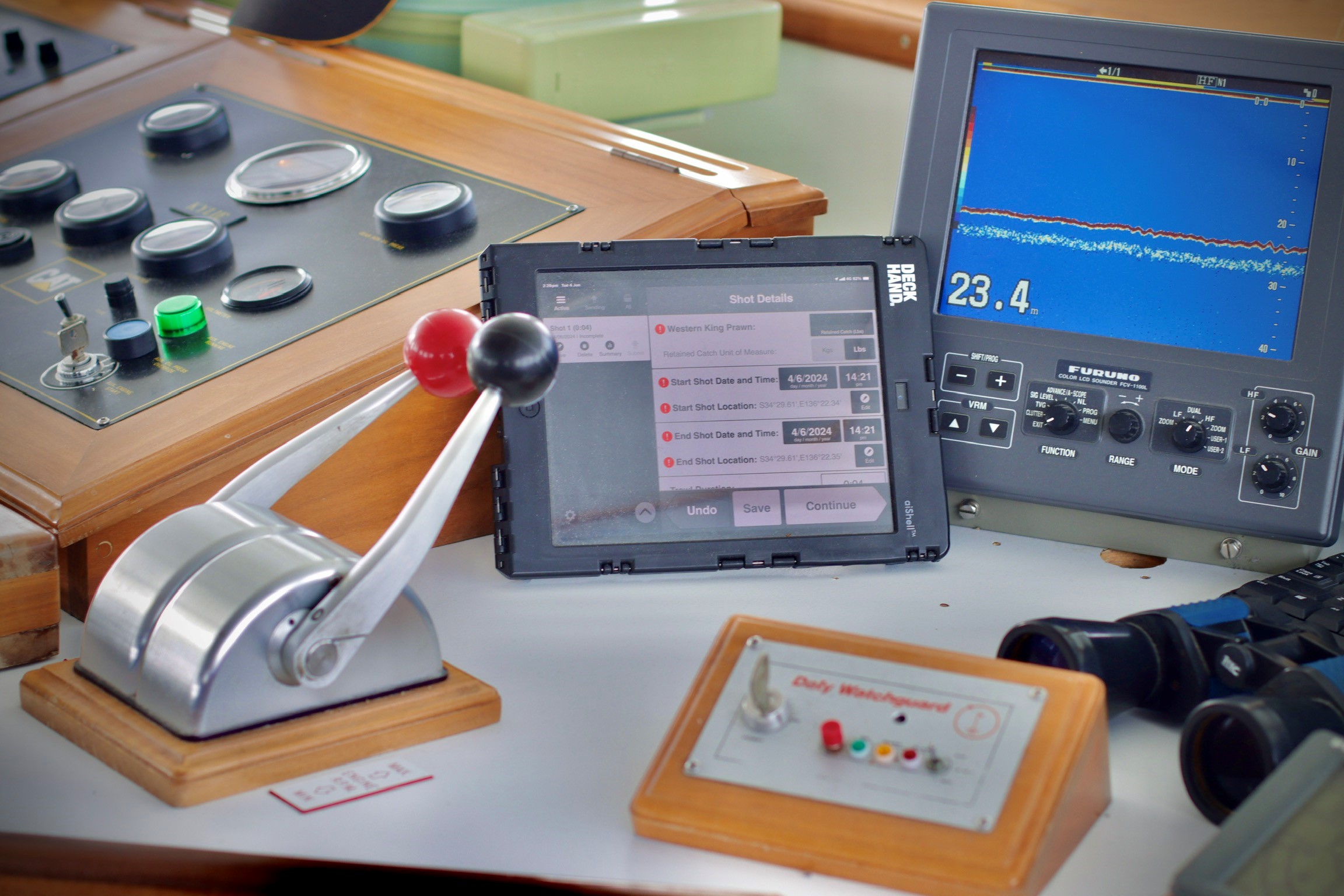South Australia’s prawn fishers are on the brink of a digital transformation, after successful sea-testing software Deckhand, showcased the potential to improve the efficiency and profitability of their operations.
In South Australia’s Spencer Gulf and West Coast Prawn Fishery, the fishing fleets head to sea as the new moon approaches, harvesting their catch over two weeks in the darkest of nights. At the end of each night’s fishing, a ‘committee at sea’ meets to decide whether to adjust the fishing zone boundaries based on that night’s catch data.
The goal for the Spencer Gulf fishery is to enhance this real-time, at-sea management, with complementary electronic reporting required for regulators.

Executive Officer of the Spencer Gulf and West Coast Prawn Association Tim Ferrell says it’s taken several years to refine the digital reporting process for the fishery.
“We’re hoping to transition to full digital reporting during our next fishing season, which will open from November 2024,” he says.
Across the country, fisheries have generally been slow to move to electronic reporting, but in South Australia, the Department of Primary Industries and Resources South Australia (PIRSA) is transitioning all commercial fisheries to digital reports.
While PIRSA has its own electronic reporting portal, since 2017 the Spencer Gulf and West Coast Prawn Fishery has been trialling the Deckhand data collection software as its reporting interface primarily because of the potential to do more with the data.

Despite the dual reporting process, Tim notes the software’s clear benefits in terms of improved accuracy, time savings and improved speed of reporting to government.
The Deckhand software automatically records details such as time, location, length of trawl time and travelling speed – often with more accuracy than its human counterparts. The software also allows fishers to submit electronic catch reports to PIRSA as the fishing trip progresses, rather than at the end of each fishing trip.

Transitioning the fishery to electronic reporting has involved customising the Deckhand workflow to the specific conditions of the prawn fishery, which has been supported through an FRDC-funded project (2017-150).
Simon Dick is founder of Real Time Data which produces Deckhand and has been the principal investigator on the project. He says it has thrown up some challenges, particularly around ensuring that fishing activities through the night and into the morning are automatically recorded to the correct activity dates. The way data is collected must align with the regulatory requirements of the fishery and fit existing regulatory reporting practices.
Simon says while fishers are sometimes seen as reluctant to go digital, it’s often not about the technology.
“Fishers are quick to make use of any technology that offers them an advantage. Given the conditions they work in, it’s important to have software that works for them – even simple things like increasing the size of the buttons to tap. You must earn your place in the wheelhouse,” he adds.
The Spencer Gulf and West Coast prawn fishers and the Deckhand team are now commencing a follow-on project with FRDC and Eratos, involving several fisheries. This will focus on helping fishers make greater use of digital data to assist their own decision-making.
Combining aspects of the catch data with environmental data such as water temperature or salinity, might also help in improving the committee at sea processes with future electronic decision-making tools. Adding economic data, such as fishing costs and prawn prices, could also help determine the best times to fish economically.
FRDC Research Program Manager Chris Izzo says once fishers have the data in their hands, there are multiple ways to leverage value from it, in addition to meeting statutory reporting requirements.
“Technology is just an enabler.There are many ways fishers can use the data and can choose who to share it with that go beyond compliance.”
Related FRDC Project
2017-150: Development of prawn fleet spatial management and profitability tools using tablet based technologies.





